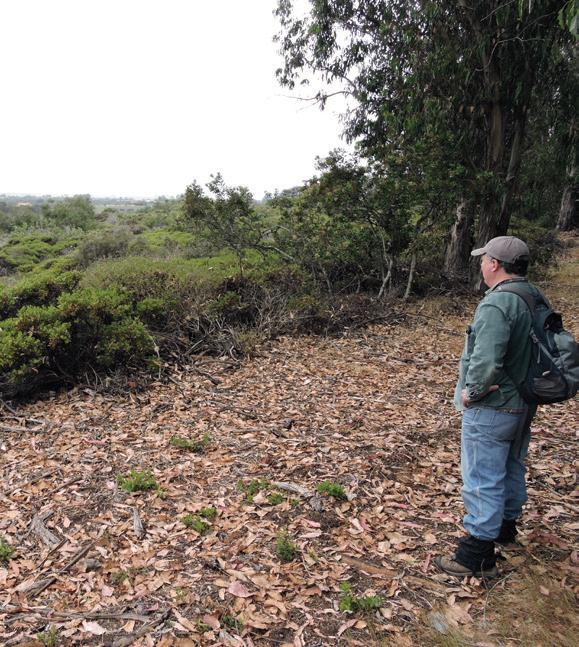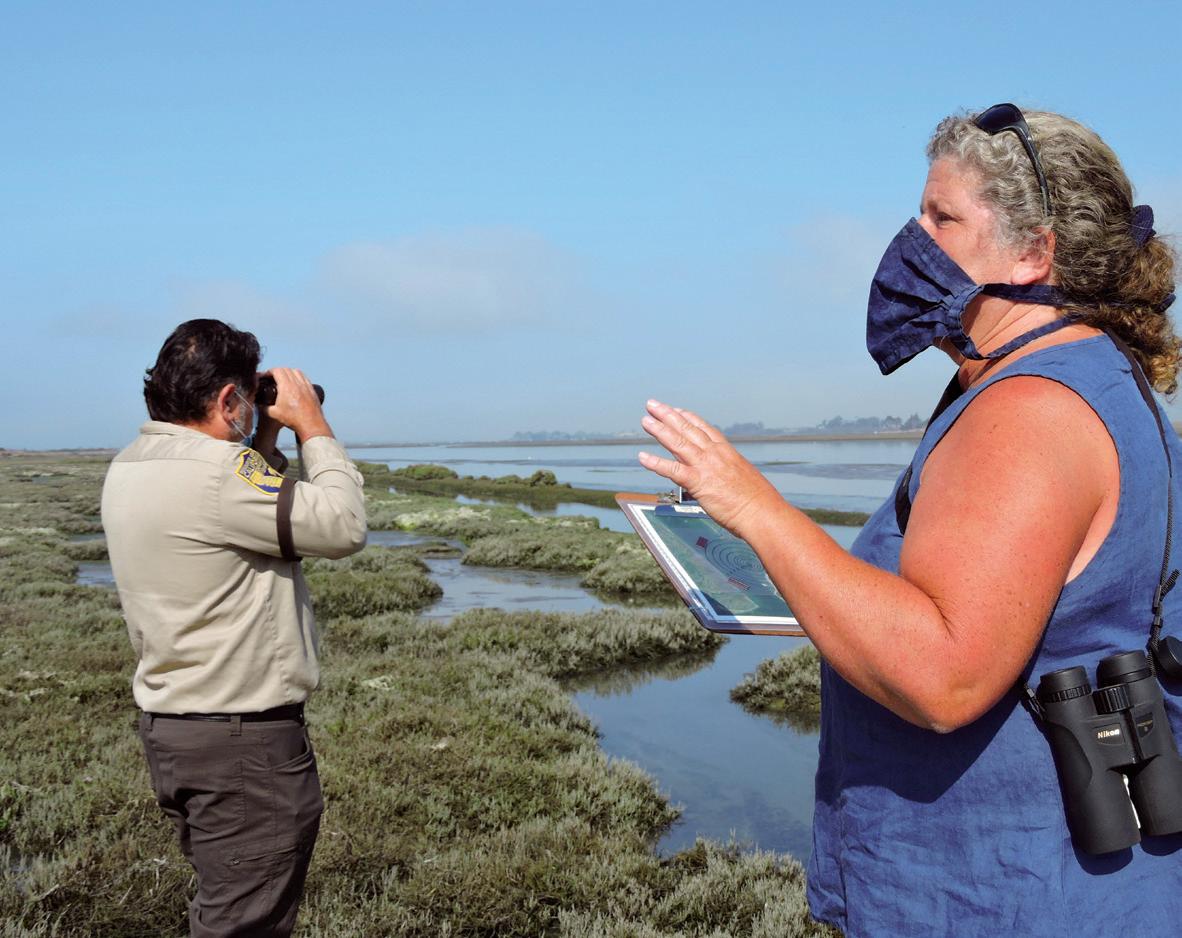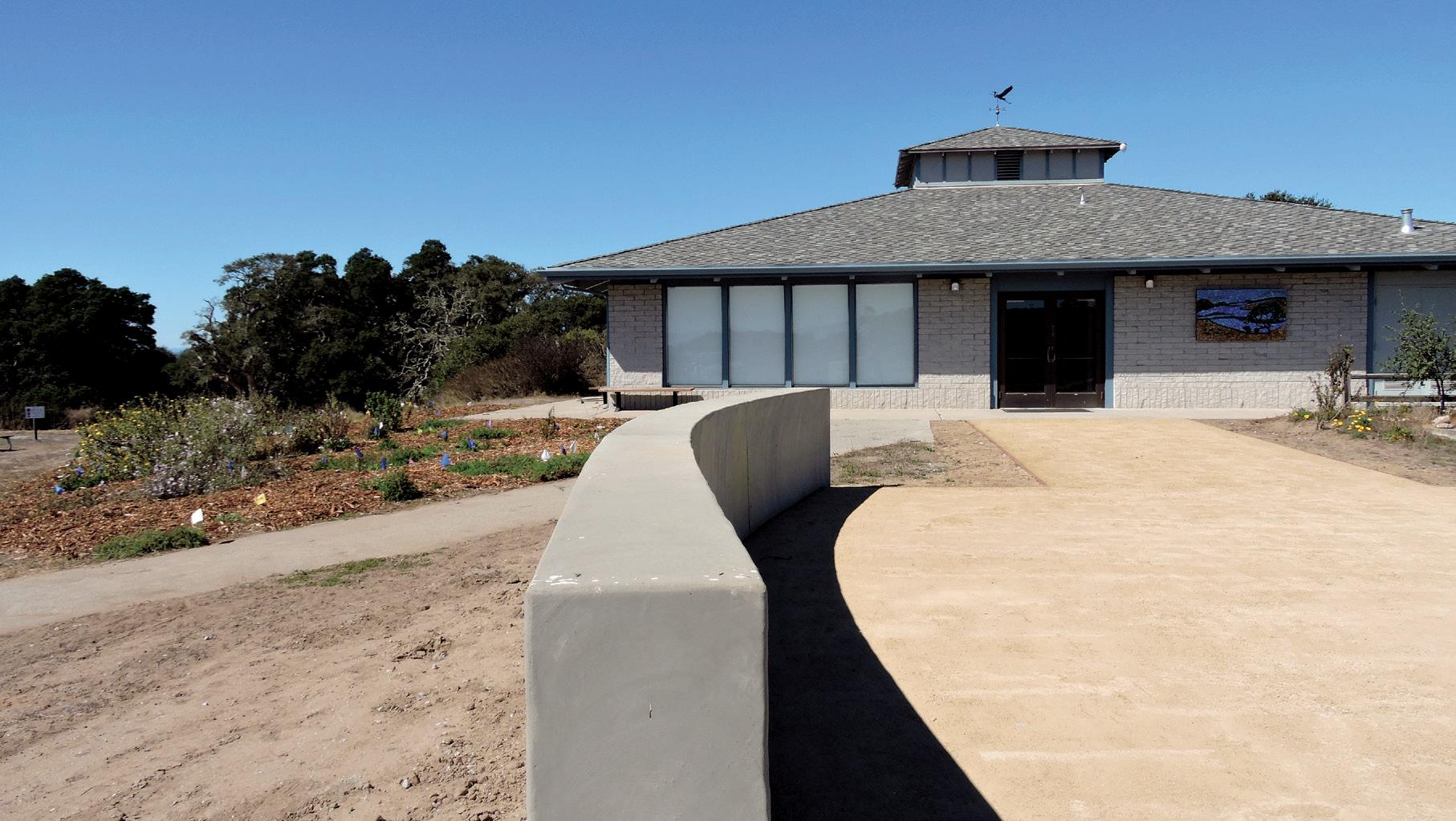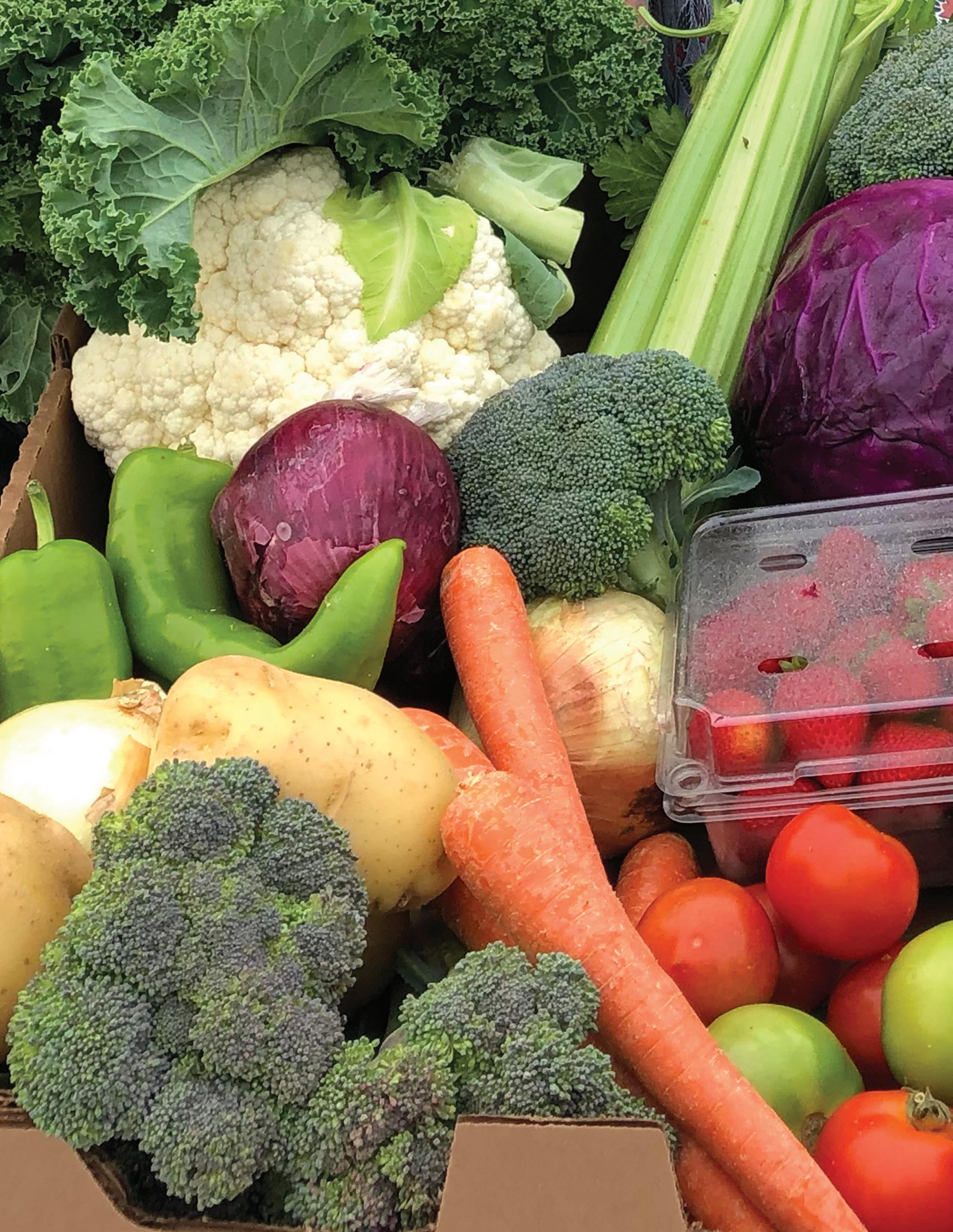like roads, gates, wells, and buildings, as well as locations of potential elevated fire danger, like stands of eucalyptus.” Eucalyptus pose especially high fire risk — the non-native trees are highly flammable, containing volatile oils that can burn in explosive flares, spreading wildfire at ground level as well as through the canopy. Eucalyptus generate substantial leaf litter and are exceptionally thirsty, siphoning off groundwater and competing with native plants for moisture. Unchecked, the high fuel loads and dry conditions created by eucalyptus pose a problem in themselves. And as eucalyptus drain water from surrounding habitat, they also threaten seasonal pools that provide critical habitat for endangered amphibians — a key reason the Reserve has already removed 300 eucalyptus trees, and the Foundation is working to remove invasive eucalyptus and restore sensitive wetlands on properties like ESF’s 167-acre Elkhorn Highlands Reserve. n
(l to r) Denise Danisch, ESF Vice President Bob Hartmann, Executive Director Mark Silberstein, and Board member Dr. Laura Solorio distribute produce at Pajaro Valley Middle School.
slough view
Acting Locally
Mark Silberstein, ESF Executive Director
As an antidote to the challenges that have characterized 2020, I want to share with you some developments that serve as my wellspring of hope — the conservation work you make possible, inspired by the values we share. In the past year, ESF has conserved three new properties with the support of our members, ranging from the ridgeline to the tideline. On one of the properties, our stewardship team wasted no time removing seventy-five tons of abandoned trash accumulated over decades, and native habitat restoration is now underway. I am also excited to share that the second phase of the Tidal Wetland Program’s Hester Marsh restoration project has begun. When completed, the effort will have restored 119 acres of sunken wetlands — formerly diked and drained for farmland and grazing — to self-sustaining salt marsh, invaluable habitat for countless species and an especially effective carbon sink. In this issue, you read about our Healthy Lands, Helping Hands initiative. I never imagined that our environmental education partnership would find us working with local schools and farmers to provide our neighbors with more than 20 tons of food, but we are gratified by the opportunity to help. We developed these relationships and programs with your investment and support — without you, this initiative would not have happened. These are challenging times, yet your investment in local conservation has a global impact. While the obstacles we face may not be resolved quickly, collectively we are rising to the occasion — I know, because I see it every day. n tidal exchange
n
7









